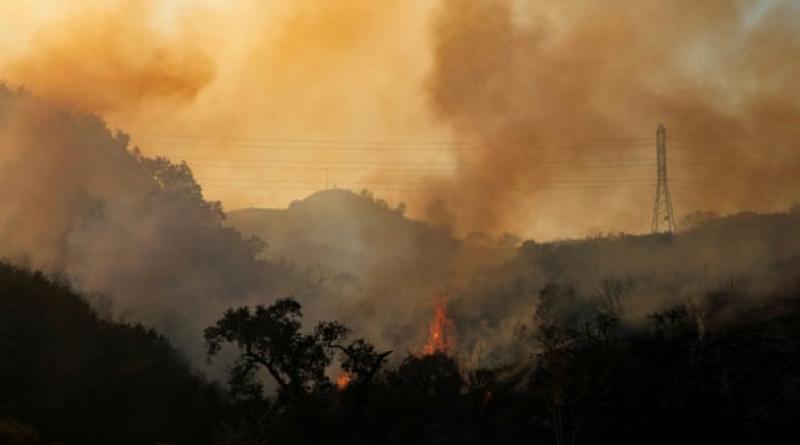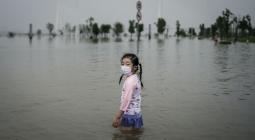Our global fire crisis is the sign of a dying biosphere. But we can take action

The unprecedented fires aren’t just caused by the climate crisis. Land use –especially real estate and animal husbandry – have a lot to answer for
Agood, natural fire can be a cleansing force. Yet, the recent and ongoing catastrophic fires around the world – including in Brazil, the US, Sweden, Russia and Australia – are not moments of a healthy fire cycle but conflagrations of a dying biosphere.
Terrible as they are, the fires in the western American states are only middling on a global scale. As of early November, 8.6m acres (3.5m hectares) had burned nationally, with half of that total in California. This year has been the worst fire season on record for Colorado and California, the latter enduring five of its six largest fires since colonization. But the American catastrophe pales in comparison to Australia’s wildfires last summer, which incinerated an eye-watering 46m acres. More than a fifth of the country’s forests were destroyed in a single year. Siberia’s fires in 2020 were even bigger – 47m acres. A tenth of South America’s largest wetland, the Pantanal, went up in smoke this year – some 6m acres – coupled with the Amazon losing 8.5m acres. That latter figure is only half the size of last year’s fiery nightmare.
These unnatural wildfires may offer few ecological benefits, but they clear out the deadwood clogging up the public sphere. It is commonly understood that the recent fires are linked to climate change, but that is only half right. “Land-use change” is a cause of similar importance, yet it takes up little space in our public sphere. While the center and left may congratulate themselves that they “get” climate change unlike the pig-headed right, no political faction has mobilized around this second great disaster.
The recent fires each have local idiosyncrasies, such as the Brazilian government’s murderous attack on indigenous people or California’s trillion-dollar real estate industry, but a global perspective helps one see why things became awful everywhere. Climate change can reduce precipitation and warm the air, a combination that dries out soils and trees in some ecosystems like California, turning forests into kindling awaiting a spark. Such processes are aggravated by the jump in deforestation globally since the 1990s. The end of history seems to have heralded the end of forests too. For example, most clearcutting of the Amazon has happened since 1990, with almost all of the land replaced with pasture for cattle. As the world-market finally emerged in the 1990s – an event predicted nearly a century and a half before by Karl Marx in 1848 – capitalism swiftly remade heaven and Earth through carbon emissions and land-use change of unprecedented scope.
Centrists seem to believe that the fires will convince conservatives that climate change is real. This has not happened. During a press conference on the fires in September, Donald Trump claimed that “it’ll start getting cooler”. After the Arctic tundra caught fire for the first time in 2018, the fascist Sweden Democrats suggested cutting taxes on gasoline. Conservatives in Australia and Brazil blamed the fires on non-existent eco-terrorists. Centrists don’t realize that the solution is not more “facts” but a rebalancing in social forces.
How then does the left understand this new age of fire? Its foremost theorist on this issue is the environmental historian Mike Davis. A native Californian, he is famous for his 1997 polemic The Case for Letting Malibu Burn, in which he attacked the government for turning a blind eye towards Los Angeles slumlords flouting fire regulations while frittering away millions to defend mansions in Malibu – an ecosystem that inevitably burns. Two decades later in 2019, he contrasted the ashes of Paradise, an exurban working-class town of the elderly and disabled, to the wealthy enclave of Calabasas, where private firefighters are becoming a “status symbol for hill-dwelling celebrities”. Davis’s critique of California’s insane housing market has only become more acute over time. Since 2000, half of all new residential construction in California has taken place in the exurbs; rising prices have forced more and more people to live surrounded by bone-dry forest with few evacuation routes.
As arsonist ranchers in Brazil make clear, animal husbandry is part of the problem too. Ranching is the main driver of deforestation in Australia. Deforestation not only leaves plenty of combustible material about, but it also dries out the remaining trees because forests create their own microclimate by releasing water vapor. Even the green giant of the Amazon might shrink to the point where it cannot sustain its cloud cover and degenerate into a savanna.
California too falls under “livestock’s long shadow”. Davis and other experts emphasize how “cheatgrass”, a highly invasive and combustible plant, aggravates wildfires. In his telling, cheatgrass is an effect without a cause, but even the US Department of Agriculture concedes the botanical scourge spreads thanks to overgrazing. And there is plenty of overgrazing in California. It is not Wisconsin but the Golden State that is “America’s dairyland”, a position it holds because of the willingness to dedicate 60% of the vast state to rangeland. Through thirsty fodder crops like alfalfa, the dairy industry guzzles more water than 40 million Californians.
Governor Gavin Newsom has announced a raft of measures as a response to the fires in California that deals with both the earthy and aerial aspects of the environmental crisis: a ban on new petrol-fuelled cars by 2035 and the mandate to preserve 30% of California’s land and coastal waters by 2030. These measures complement the state’s existing commitment to cut its greenhouse gas emissions by 40% relative to its 1990 level by 2030. While these goals are laudable, Newsom pretends that they will not conflict with the livestock industry’s interests. Yet, even big dairy’s in-house scientists scoff at the “cowpie in the sky” goal of cutting emissions by 40%.
While California has met its target of reducing 2020 emissions to 1990 levels, mainly through expanding its renewable energy infrastructure, full decarbonization will require painful political confrontation. There are lots of low-hanging fruit left, but they won’t get us all the way to the IPCC 1.5-degree goal. As long as the power stays on, everyone can get behind solar panels and wind turbines. But limiting climate change to 1.5C and averting mass extinction – by shrinking the livestock industry and making what even the apolitical IPCC calls “rapid, far-reaching and unprecedented changes in all aspects of society” – make the conflict that centrists like Newsom seek to avoid all but inevitable.
The solution to the wildfire problem is clear enough, and socialist critics like Davis are on the right track to criticize the cult of home ownership. Centrists should be given credit for pushing forward a renewable-energy transition. Yet, the environmental crisis cannot be fully overcome without a clear-eyed look at the land-use problem – and serious consideration over whether animal husbandry is worth its outsized environmental costs.
Californians like to pride themselves that the future happens there first. Indeed, it isn’t too late to remake heaven and Earth once more, decarbonizing the sky and rewilding the land to create a more biodiverse and environmentally stable society. Without its bloated livestock industry, California could vanquish cheatgrass, sequester tons of carbon in healthier ecosystems, and liberate dammed rivers. In this rewilded ecosystem, beavers – yes, California has beavers – could reclaim their old territory, acting once again as nature’s humble engineers. Wetlands, many sustained by beaver dams, act as a fire break and refuge for forest creatures during a blaze. (Indeed, mega-fires may be sparking local extinction events). Many of these lessons apply to other fire-racked regions of the world, from the Amazon to Australia. But first, there needs to be a political coalition that recognizes what fuels these fires in the first place.
-
Drew Pendergrass is a PhD student in Environmental Engineering at Harvard University. Troy Vettese is an environmental historian and a post-doctoral fellow at Harvard University’s Weatherhead Center. Pendergrass and Vettese are writing together Half-Earth Socialism (Verso 2022)
8 December 2020
The Guardian




